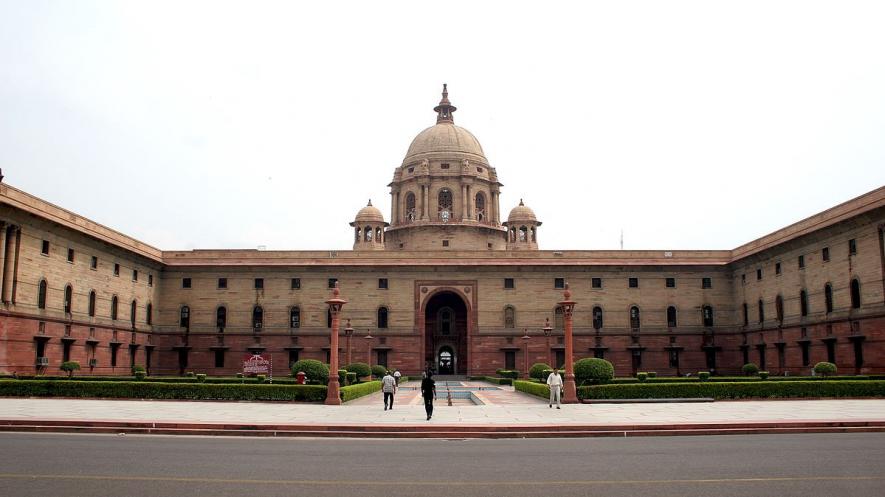Ministry of Defence Enduring Self-inflicted Abrasions

Image Courtesy: Wikipedia
Union Minister Nirmala Sitharaman pointed out in her address on December 22 that as urbanisation is spreading at a “very fast” rate in cities, defence estates are critical assets that need to be “more cautiously protected” against any kind of encroachment. She was speaking at the Raksha Mantri Awards for Excellence 2018 hosted by the Directorate General of Defence Estate (DGDE). The minister also emphasised the need for “greater coordination” between cantonment and municipal authorities to ensure no part of defence lands is lost to encroachment.
As per the press release on July 30, 2018, around 9,980 acres of land is under encroachment as per the data integrated by the project Raksha Bhoomi which was verified and authenticated in July, 2011.
Opening of cantonment roads
On May 20, the Ministry of Defence had issued a press release stating that a decision had been taken to open all closed cantonment roads to the public. This was followed by the dismantling of all roadblocks and barricades. However, this led to traffic management becoming a part of the duties of the military authorities.
Major (Retd.) Priyadarshi Chowdhury, had raised a number of questions regarding the use of defence land, and had argued that the decision to allow thoroughfare through roads in cantonment areas only serves the interests of the land mafia and a few individuals in the DGDE.
Considering the decision of the Andhra Pradesh High Court, it appears that the current legal position is that civilians can be restricted at any time from passing through Class A (1) land on which barracks, ammunition dumps, rifle ranges and other allied military installations exist. The local military authorities (LMAs) have absolute authority over Class A land, the DGDE has control over Class B land, and the Cantonment Boards have control over Class C land.
This apparent ‘threat’ that alarms the MoD seems to be self-inflicted as a result of their recent policies which seem to have ridden roughshod over the established existing procedure, while stating that section 258 of the Cantonments Act was not adhered to.
Exclusive Military Stations
Whether real estate was the real motive behind the opening of cantonment roads or whether it is benefitting the ‘land-mafia’ is yet to be seen.
The decision was followed by another major proposal. The Army conveyed to the Ministry of Defence (MoD) that military areas within the cantonment can be converted to “exclusive military stations” on which the Army will have “absolute control”. The proposal also extends to hand over the civilian areas in the cantonment to the municipal bodies.
Major Priyadarshi told Newsclick, “The decision of May 2018 is illegal and incomplete, as it does not outline the modalities of divestment. Secondly, the revenue accrual from divestment will be utilised to build the proposed military stations. However, the absence of both the modalities of divestment and the revenue accrual from divestment points to a land scam. If, on the other hand, the defence land Class B and Class C is bought by the municipal authorities, only then can the 62 cantonments be built into exclusive military stations.”
Major Priyadarshi had called the proposal of cantonment conversion a good move as the proposal also included the abolition of DGDE, as well as of the Cantonment Boards.
As far back as in 2010, the Comptroller General of Defence Accounts (CGDA) had recommended disbanding the Directorate General of Defence Estates. The idea that the DGDE was conniving with the land mafia is not unfounded. The process, however, for the abolition has not been established.
The top Army hierarchy believes the step will help reduce the strain on the country’s defence budget for the annual maintenance of cantonments, which amounts to Rs 476 crore this year, as well as strengthen security in military stations, simplify their land management and prevent encroachments, reported Times of India.
It was reported that Sitharaman and her husband possess a house in the cantonment area in Secunderbad. They also allegedly operate schools and commercial establishments in the area. It is also alleged that this influenced the decision to allow civilian access to the cantonment areas.
The Minister said that after any kind of encroachment, it becomes everybody’s tiring business to carry out its removal. “So, I strongly appeal to all, to have greater coordination with municipal and cantonment authorities, to ensure we do not lose, inch by inch, what is otherwise defence estate,” said Sitharaman.
Among the various categories of awards which were handed out by the minister at the ceremony hosted by DGDE, Delhi Cantonment won one in the Swachh cantonment segment.
Bureaucracy to render CSD redundant
The continuing turf war between the Armed Forces and the Ministry of Defence extends to the Canteen Stores Department (CSD) as well.
The CSD, which was established in 1948 alongside the Navy canteen services, was to provide the military with their basic needs. Their inventory has grown to 4,000 items over the years and the profit in the last financial year, earned mainly from military personnel was Rs 1,253 crore. The CSD is run by army HQs, and comes under the overall supervision of the defence minister.
The CSD was subsequently extended to civilians in 1966, against the military advice. Further, it was even extended to retired civilian staff, with restrictions on some items of purchase.
The General Manager and Chairman Board of Administration (GMBOA), responsible for the running of the CSD network, was always a serving military officer of the rank Major General. However, the MoD in 2017 unilaterally amended the gazette notification containing recruitment rules for the GMBOA, allowing for a Joint Secretary-ranked bureaucrat to be appointed.
“The intention behind appointing a bureaucrat is to dilute CSD facilities by opening it to other central government organisations, making it almost redundant as also to amend rules on sharing profit earned by the CSD,” reported The Statesman.
The three service chiefs had jointly approached the defence minister in August, but no action was taken.
“CSD profits have already been used to fund the Sanskriti School in Delhi, which was created for children of bureaucrats. Most of the profit is kept by the government, the small portion which is returned to the armed forces is utilised for creating facilities and providing financial assistance to veterans,” said Major General (Retd.) Harsha Kakar while speaking to The Statesman.
The military and the bureaucracy are going head-to-head, in what appears to be another attempt by the ministry to denude the armed forces of every institution they have.
Military hospitals are already being used by ‘Modicare’, the CSD is being taken over by the bureaucracy and the cantonments have been opened at the behest of the Defence Minister, driving the armed forces to such depths where they are forced to fight for their rights and dues.
Get the latest reports & analysis with people's perspective on Protests, movements & deep analytical videos, discussions of the current affairs in your Telegram app. Subscribe to NewsClick's Telegram channel & get Real-Time updates on stories, as they get published on our website.
























